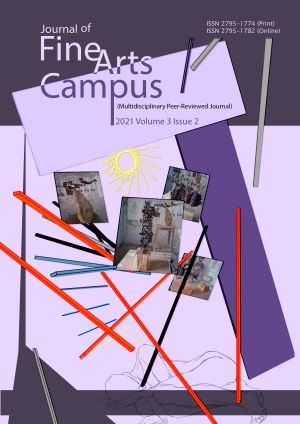नेपाली समसामयिक चित्रकलाः राजनैतिक गतिशीलताको प्रतिविम्व (Contemporary Nepali Painting: A Reflection of Political Dynamics)
DOI:
https://doi.org/10.3126/jfac.v3i2.48236Keywords:
समसामयिक, आधुनिक, आधुनिकता, सिमान्तकृत आभाष, थिमाहAbstract
नेपाली समसामयिक चित्रकलामा राजनैतिक गतिशीलताले निम्त्याएको परिदृश्य प्रतिविम्वित चित्रहरुमा एत्रतत्र सर्वत्र पाउन सकिन्छ । नेपालको संस्कृतिक, बहुभाषिक विविधताले भरिएका देशमा अनेकन राजनैतिक उथलपुथल भएको देखिन्छ्र । पृथ्वीनारायण शाहले एकीकरण अभियान संगै थालेको आधुनिक नेपाल माथि टेक्दै एंग्लो–नेपाल युद्वको परिणाम स्वरूप सृजित सुगौली सन्धिको ढोकाबाट प्रवेश पाएको सभ्य, व्यवस्थित र परिस्कृत पश्चिमा शैलीले परम्परा विपरित आधुनिकताको परिदृश्यलाई सीमांकन गरी कछुवाको गतिमा अघि बढेको पाउन सकिन्छ । राजनैतिक विग्रहमा तिनका ध्यानाकर्षण र हटेका ठाँउहरुमा बनेका प्रतिबिम्बात्मक धार्मिक चित्रहरु, राणाकालिन ब्यक्तिचित्रहरु, वि. सं. २००७ को प्रजातन्त्र वाहाली पछिका यथार्थ र अमुर्त चित्रहरु, र बि.सं. २०४७ सालको प्रजातान्त्रिक पुनर्वाहाली पश्चात जातीय, लैंगिक, क्षेत्रीय चित्रहरुमा ठिमाह, द्विविधा, र बहुलताको पहिचानलाई आत्मसाथ गर्दै अघि बढेको प्रष्ट देख्न सकिन्छ ।
(The scenario caused by political dynamics in Nepali contemporary painting can be found everywhere in the reflected paintings. There seems to be a lot of political upheaval in Nepal, a country full of cultural and multilingual diversity. Prithvi Narayan Shah started with the unification campaign, leaning on the modern Nepal, which was created as a result of the Anglo-Nepal war. It can be seen that the civilized, orderly and refined western style, which entered through the door of the Sugauli Treaty, has demarcated the landscape of modernity contrary to the tradition, and has moved forward at the speed of a turtle. His attention to political idols and reflective religious paintings made in remote places, personal portraits of Rana period, V. No. 2007 post-democracy real and abstract paintings, and B.S. After the democratic restoration of 2047, it can be clearly seen that the ethnic, gender, and regional pictures have moved forward by embracing the identity of diversity, duality, and plurality.)




